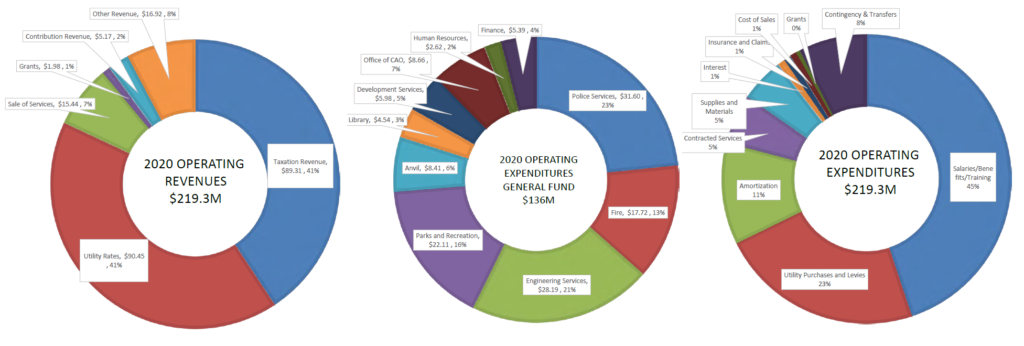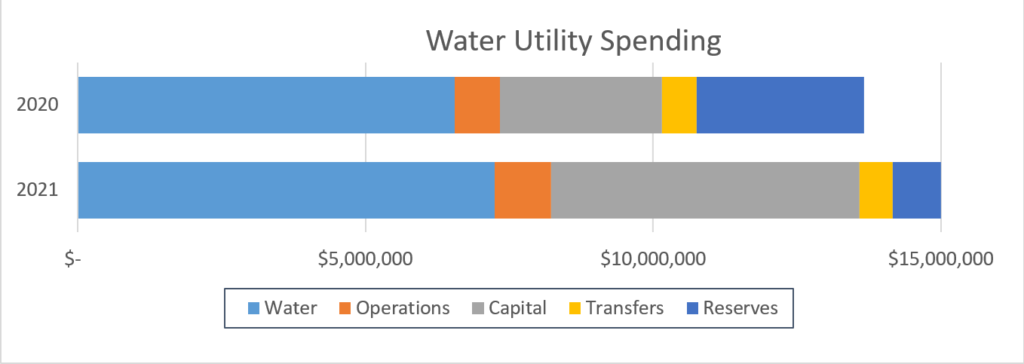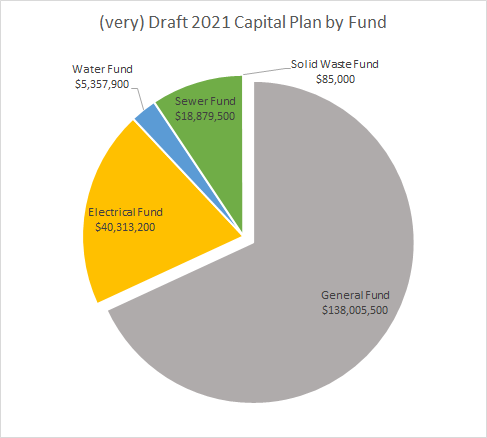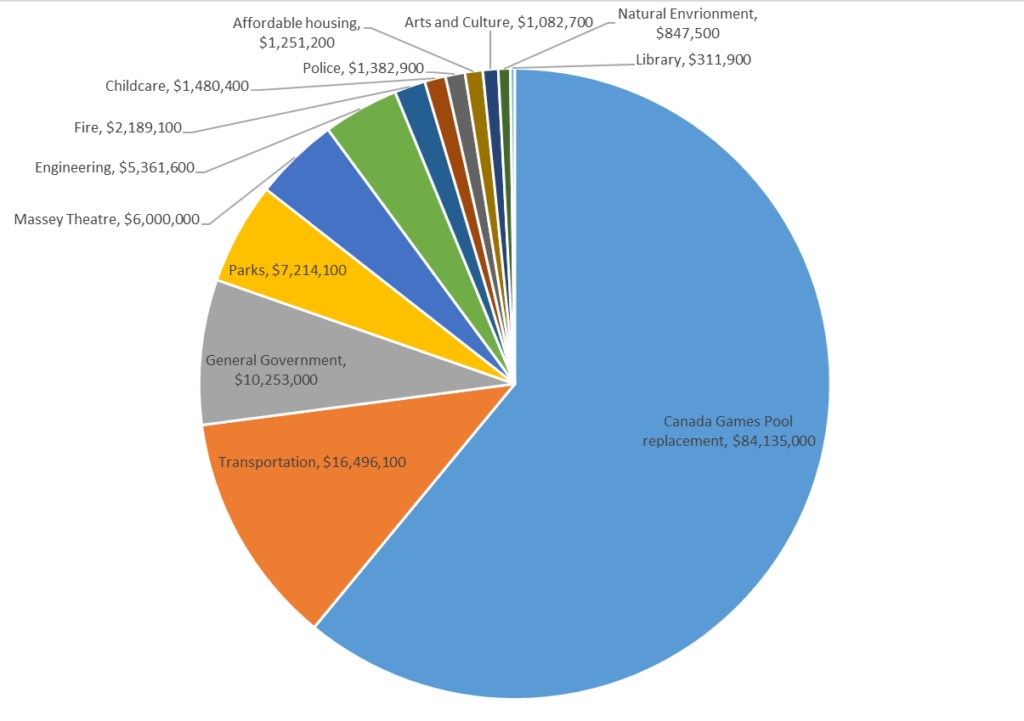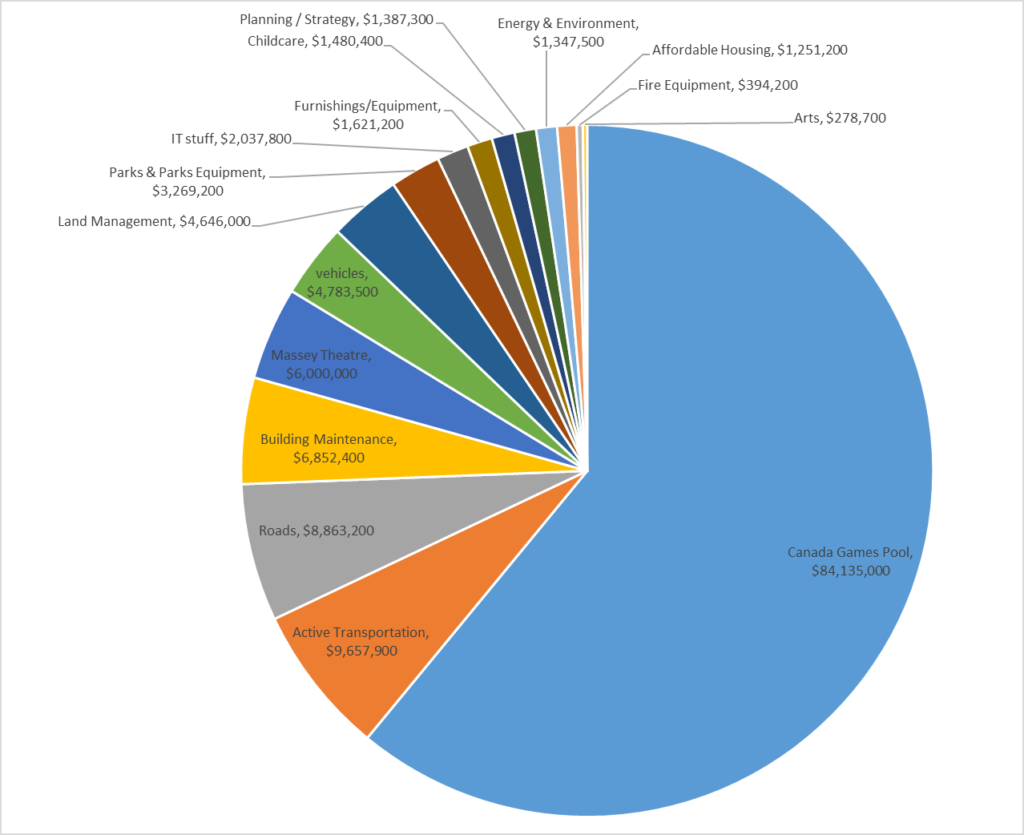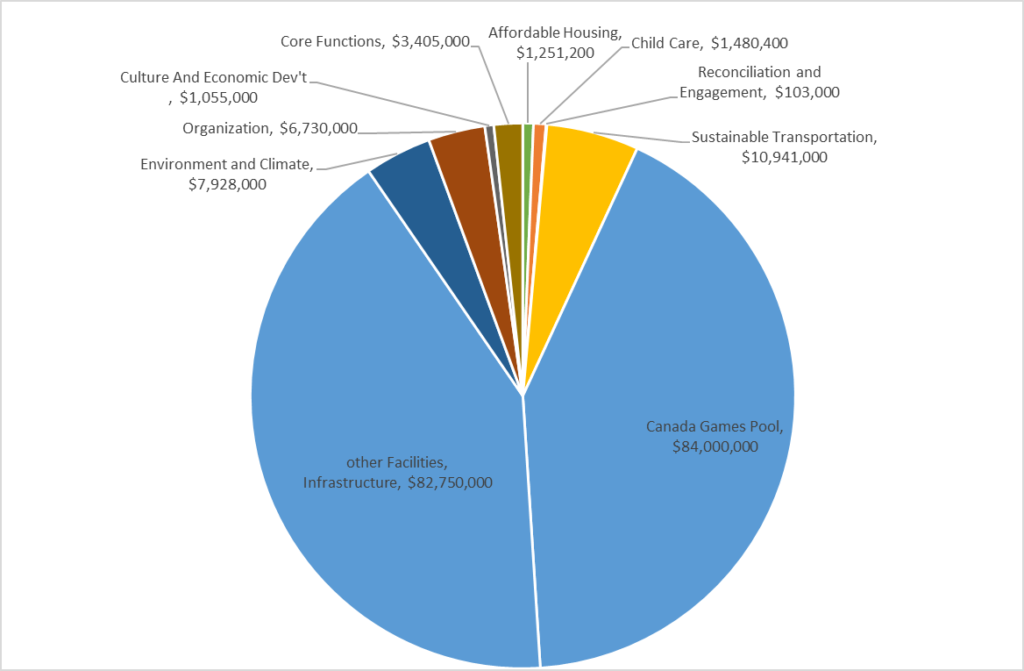We had a lot of business for the November 9th meeting. A bunch of items will go to Public Hearing, so more exciting meetings in the near future. We also had a couple of presentations and public delegations, which you can listen to/watch online if you are into that kind of thing, and a pretty large and slightly messy agenda due to late additions and timing around presentations, so everything here may not be in exact order. Maybe pour some tea, this is a long one:
We started with moving the following items On Consent:
100 Braid Street: Zoning Bylaw Text Amendment and Development Permit to Facilitate Provision of Secured Market Rental Housing with Art Gallery/Studio Space – Bylaw for First and Second Readings
Wesgroup owns the property at 100 Braid, and already has an approved plan to build a high rise mixed-use condo building. They are now proposing to instead build a purpose-built rental building in exchange for a significant (50%) increase in density. This would make for a taller tower (118 metres instead of 65), and would provide 423 rental units, 96 of which would be less-than-market as secured through the CMHC affordable housing program.
These less-than-market units would be just that – priced at a level below the market, but will not meet the City’s definition of “affordable housing”, which is stricter than the federal CMHC standard. One of the presentations you can enjoy if you watch the video is an outline with quite a bit of detail on how the CMHC program works.
This report, however, outlines the project that will be going to Public Hearing, and asks that Council approve the terms of a Housing Agreement that will secure the dedicated rental use of the units in the event that Council approves the final proposal. Council moved to approve those recommendations.
COVID-19 Recovery Public Engagement Input – Summary Report
Further to engaging the public on the City’s Pandemic strategy, we had a recent City-wide engagement and survey effort, and had something close to 1,300 responses, which is a pretty impressive for any non-dog-park-related survey. The report and resultant graphics are really worth checking out in some detail.
Themes coming out of the survey were general support for efforts to create more accessible public spaces (and desire for more covered outdoor spaces, public WiFi, and public washrooms), and significant concerns about homelessness and housing security. In general, people support efforts to improve pedestrian spaces in the City, value public spaces, and are encouraging us to push forward on environmental initiatives and reconciliation. There is much more in here, but this is a really valuable touchpoint I think for Council as we are half way through this somewhat-disrupted term. Our Public Engagement team is doing great work these days.
Extension of Sidewalk/Street Patios and Parklets to Support Business Recovery
We made some temporary changes in how we manage patios in the City, following up on the change in Provincial regulations on how restaurants and pubs can serve on patios, and to give food service providers more flexibility in how they adapt to the COVID world. With these temporary changes extended to next fall, the City is looking at how we can support winterizing these spaces if businesses want to go that step.
Budget 2021 – Upcoming Budget Workshops
Our budget 2021 engagement process is ongoing, and we are doing everything we can to make this the most transparent and public budget deliberation process the City has ever had. This has included more effort to “demystify” municipal finance, so that people are better empowered to have a meaningful engagement. There are going to be pressures on our 2021 budget related to COVID, but Council has still been clear (supported by some of that public engagement I talked about above) that we do not want to slow down on Climate Action or cut services that support the community at this difficult time.
Preliminary numbers are very preliminary, but inflation and collective agreements give us a 2.3% tax increase baseline, with various COVID and strategic plan pressures pushing us up over 7%. That said, it was just announced that the City is in line for about $6 Million in COVID relief grant money from senior government, which should help address some of the significant operational revenue gaps in our current budget.
There are workshops coming up in November and December to go through the Capital Budget, Utility rates, and Operating budget, with the goal of having a draft budget together by the end of December.
2021 Schedule of Regular Council Meetings
This is the preliminary schedule of council meetings, workshops, and Public Hearings for 2021. As always, subject to change as needs emerge. Mark your calendars!
TransLink/SkyTrain Guideway (22nd Street Station to New Westminster Station): Request to Extend the Construction Noise Bylaw Exemption
SkyTrain rail replacement is an ongoing process to keep the now more than 30 year old system running. For obvious reasons, this work must occur when the SkyTrain is not running, so we are providing a night time construction noise exemption.
273 and 275 Sherbrooke Street: Development Permit – Consideration of Waiver
Back in 2012, E.Fry proposed to expend their services in Sapperton and went through an OCP Amendment and Rezoning to support that. It was a high-profile application at the time, with a couple of very lengthy Public Hearings, before Council almost unanimously supported the rezoning.
The proponent is now ready to go forward with the approved project, but in the meantime the City has adopted a new OCP, this property did not fall within a Development Permit Area, meaning that the proponent now ostensibly requires a Development Permit for something already approved for the site. Council is proposing to waive that DP process, in light of the significant public process and design review the project already completed. Notably, the proposed use (supportive housing for women and children) is a more urgent need now than even in 2012 when the project was approved.
835 Royal Avenue: Heritage Revitalization Agreement and Heritage Designation – Bylaws for First and Second Readings and Heritage Register Addition
There is an old house you may not have noticed on the hill on Royal Ave. I used to live right across the street, and I hardly knew it was there, but it is one of the oldest intact houses in New West. The owner wants to preserve it through an HRA, stratify it into three units, and build a three-unit townhouse project on a subdivided back of the property.
This would go to a Public Hearing, so I’ll hold my comments until after then.
631 Second Street: Heritage Revitalization Agreement and Heritage Designation – Bylaws for Two Readings and Addition to Heritage Register
The owner of this small heritage house in Glenbrooke North wants to subdivide their lot and build a small infill house on the second lot while preserving the existing heritage house. The HRA request is related to the lots being compact, and the FSR for the two houses to be above what is currently permitted in the zone.
This would go to a Public Hearing, so I’ll hold my comments until after then.
709 Cumberland Street: Heritage Revitalization Agreement – Bylaw for First and Second Readings
The owner of this property in upper Sapperton wants to subdivide it, move a heritage house from downtown to one lot, and re-build a storied-and-destroyed heritage house on the other lot, add laneway houses, and preserve the heritage house by an HRA. This would exceed the allowable FSR for both compact lots, and require various other allowances.
This would go to a Public Hearing, so I’ll hold my comments until after then.
EV User Fee Implementation at City Owned Public Charging Stations: Bylaw for Three Readings
On the recommendation of the Electrical Utility Commission, the City is following the lead of other municipalities across North America and starting to charge user fees for vehicle charging stations. This is not much of a revenue driver, when you amortize the infrastructure costs of the chargers, but it does create a more fair allocation of a limited resource, and improves access to the charging stations overall. Our pricing will be similar to that being introduced across the region – generally $1 or $2/hr for Level 2 chargers and $16/hr for the Fast Chargers at Queens Park, which is again consistent across the region.
Q to Q – Resumption of Service Plan
The Q to Q Ferry was one of the services the City cut back at the beginning of the Pandemic. Initially, there was little in the way of public health guidance on how to run it safely, and superficially similar to TransLink services and other passenger ferries like in False Creek and the Victoria Harbour, there were some challenges in understanding if people would use the service and what the cost issues related to adapting to COVID-safe operations were. Both of the False Creek ferry operators are now up and running (with reduced capacity), and the Victoria Habour ferries had some financial issues, but got a very limited operation going at the end of the summer before suspending for the winter. I need to note that those three services are very different than the QtoQ in that they run on calm water with much lighter boats, and in that they are self-supporting, run completely on fare revenue, while the QtoQ is significantly subsidized by local taxpayers on both sides of the river.
The resumed service will be limited to morning and evening during the week and shorter hours on the weekend. There are new details about payment and queueing and operations to keep everyone safe. We have to see if people show up, and will be closely monitoring usage. This has created quite the discussion in the community and in Council about the role of the QtoQ, and perhaps I’ll expand on that in a follow up blog post once the ferry is back up and running.
Westminster Pier Park Management Oversight Committee: Westminster Pier Park – Fire Recovery Update
This report provides a bunch of detail about the current situation with Pier Park. I had a professional interest in the challenges related to managing the demolition and environmental remediation of the debris (they are significant), but the bigger community interest is more about when can we open Pier Park again, what is all of this going to cost us, an when do we start the re-build?
Short answers are: probably early in 2021, as we have work to do to assure the park is safe and has emergency access; It is insured, but how that insurance plays out is going to be a long conversation negotiated with stakeholders as the clean-up alone with be counted in the $Millions; It is way too early to start talking re-build, as the pier is a complicated piece of jurisdiction involving the federal government, First Nations, the Port of Vancouver, and the rail companies. The parallels with the White Rock pier damage are superficial; this is a much larger and more complex situation in a part of the waterfront considered “Working River” by the Port. I really hope the community can be involved in visioning a replacement, but that is work for 2021 and beyond. Sorry, I just don’t see those 2 acres of deck being replaced any time soon.
We then had an on-table report and Presentation from staff:
COVID update from the Province
There were new orders from the provincial health authority, and we are in the Fraser Health region where the current COVID situation is… not good.
In short, we are cutting back on some recreation programs, and are making facemasks mandatory in all indoor City facilities. This is consistent with Public Health orders, and makes or a safer workplace for our staff, and safer public spaces for our residents.
The following items were Removed from Consent for discussion:
COVID-19 Pandemic Response – Update and Progress from the Five Task Forces
This is our regular update from the internal task forces coordinating the City’s response to the ongoing pandemic. Attached to this is an update report on Child Care stresses during the Pandemic, including the results of a survey of childcare operators across the city to determine how their Pandemic response and recovery is impacting their operations. Council also raised some concern about the slow pace of rolling our emergency housing space with wintery weather arriving right now.
404 Second Street: Heritage Revitalization Agreement and Heritage Designation – Bylaws for Two Readings and Addition to Heritage Register
The owner of the butcher shop in Queens Park wants to expand the building, formalize the now non-conforming land use, and enter into an agreement to restore and preserve the building, in one of the more unusual HRAs in this week’s Agenda full of HRAs.
This would go to a Public Hearing, so I’ll hold my comments until after then.
515 Fourth Street – Heritage Revitalization Agreement and Heritage Designation – Bylaws for First and Second Readings and Addition to Heritage Register
The owner of this modest heritage house in Queens Park wants to convert it to a duplex and build an infill house on the lot, then convert the property to strata ownership. This would require some relaxations for set back and parking, though the FSR (0.79) and number of residential units (3) would comply with existing entitlements in the OCP and the Development Permit area. This was an unusual application, in that it bounced around committees for a while, and the Land Use Planning Committee did not recommend it to Council, but the owner does have the right to be heard before Council to determine if there is any support for the proposal.
We had a bit of e-mail feedback from a few members of the Queens Park heritage community, and two delegations opposed to the application. It appears that the opposition was partly to the idea of stratification of HRAs (though the City has approved many stratified HRAs, at least 4 in the last three years), and partly just a feeling the plan was “too dense”, though again I have to note the density (measured by FSR), lot coverage, and massing were all within existing entitlements and guidelines.
The option before Council was to approve first and second reading, which would send the application to a Public Hearing. Council voted in a split vote to not give the application these readings, essentially ending the project as it is (I voted with the minority to support the application going to Public Hearing). The owner will need to bring something else to Council if they want to make changes on the lot that are not within the existing zoning.
Miscellaneous Zoning Bylaw Amendments: Zoning Bylaw Amendment Bylaw for First and Second Readings
Our Zoning Bylaw is a big, complicated document that is constantly being amended. As people read it or try to interpret it, sometimes they discover things that are inconsistent internally, places where it doesn’t match other City policies, grammatical errors, math errors, and such. When discovered, staff put these in a pile, and occasionally that pile comes to us as an omnibus Amendment Bylaw like this. There are a number of changes here, and they will all go to Public Hearing. If you have opinions about Massage Services permitting or metric conversion, or anything else in here, please let us know.
616 and 640 Sixth (Orr Development): Development Variance Permit, Housing Agreement Modification and Project Update
Back in 2019, Council approved the first new multi-family development in the Uptown commercial core in more than a decade. It was a notable Public Hearing because it was a combination of secured market rental and condo ownership, and led some people to critique those two tenure types having different entrances. Some characterized it as a “poor doors” situation, though there was no non-market housing component involved in the project.
The proponent has, apparently, been doing some number crunching since that approval, and has determined that making the entire building purpose-built-rental is a better plan for them. They also want to reduce (!) overall height by two stories, offset by a 6% increase in the floorplate of the tower, and reduce some of the parking required to better suit the needs related to rental tenure. This requires an update Housing Agreement and amendment to the Development Permit.
Shine Bright New West Holiday Initiative
The traditional Christmas Tree lighting at Hyack Square can’t really happen this year, as we don’t want to be having large group gatherings. So in working with the BIAs, staff from Special Events division and Economic Development have another plan to “light up” the town during the Christmas season. Light displays around town by businesses, supported by the City, and planned self-guided walking tours so you and your bubble can enjoy without the issues around crowds.
The majority of Council supported this new model, but some concerns were raised on whether while expanding the program beyond just Downtown, we were spreading it a little thin, and perhaps we wanted to add more funding to assure that each commercial district has sufficient funding to make for a successful program, so we approved in principle, and asked staff to come back with expansion plans if appropriate.
It’s going to be a different Christmas this year, folks, I hope you can find a new way to make it fun with your family and friends, and can support local businesses who are going through as challenging as time as ever.
Tobacco Free Water Pipe Smoking Premises (Hookah Lounges)
The City received requests to consider a Hookah Lounge, though no formal location or application was received. This is not compliant with the City’s regulations or with provincial regulations around indoor smoking in businesses, and we simply didn’t have a zoning or business permitting to allow this use
Council approved the staff recommendation to not change our Bylaws to permit this use, mostly based on the recommendations from Public Health. The only municipality that does allow Hookah Lounges (Burnaby) has signaled their intent to change that allowance in the near future. Not permitting indoor Hookah use in commercial businesses is consistent with the City’s approach to tobacco, cannabis, and vaping regulations.
We then had two items that were discussed in a closed meeting, but we are now Releasing from Closed:
British Columbia Youth Parliament (BCYP) Nomination – 92nd Parliamentary Session (Originally closed because of privacy of potential candidates)
The City has the ability to nominate a local youth to take part in the BCYP, and we are doing so!
Port of Vancouver Lands at 430 Canfor and Traffic Management (Originally closed because it may involve details of negotiations with senior governments)
It was moved that staff report back to Council on the traffic impacts of the change of land use at 430 Canfor, measures by the Port to assure traffic related to the current use is not creating an unsafe condition for other road users, and on opportunities for the City to address any safety concerns related to traffic with the Port of Vancouver.
In short, the property is Port of Vancouver land, so we don’t have any jurisdictional control over its use, but there have been some concerns raised that the type of use (essentially, a park-and-ride for workers at various TMX work sites) is having negative traffic impacts, so we are asking staff to work with the Port and the operator on site to look into this.
We then Adopted the following Bylaws:
Development Services Fees and Rates Amendment Bylaw (Amusement Arcade) No. 8228, 2020
This is one of the smaller bylaw changes that would need to occur to permit the formalization of the arcade use for a site in Sapperton, and it is now the law of the land.
Engineering Fees and Rates Bylaw Amendment No. 8230, 2020
Development Services Fees and Rates Amendment Bylaw No., 8232, 2020 and
Cultural Services Fees and Charges Amendment Bylaw No. 8241, 2020
These are the Bylaws that set our fees for service for the next year as part of our annual budgeting process. Now adopted by Council!
Finally, a bit of New Business:
Litter Receptacle Optimization Initiative
I resolved that:
THAT Staff provide an update report on the litter receptacle optimization initiative introduced to Council on October 2019, outlining any operational savings and metrics on the impact to street litter and illegal dumping.
A little more than year ago, staff provided a report for information about plans to change how they deal with litter receptacles in parts of the City. This included the removal of some problematic receptacles where people were dumping domestic garbage, and a new plan for addressing and tracking litter in the commercial districts. At the time, Council had some questions about the plan, but staff indicated they would be tracking the program and report back to us.
In short, it was expected that reducing trash cans in some public places may actually reduce litter and illegal dumping. Some people (including me) were incredulous of this idea, but staff did reinforce this was based on experience in other jurisdictions, and becoming a well-accepted practice. As counter intuitive as it is, I had to draw parallels between this idea and our modern understanding of how increasing road space actually makes traffic worse, which is an established, if counterintuitive, idea that I have learned to understand. So I was willing to suspect my incredulity and see where this plan from staff went.
In the year since, I have heard members of the public express concern about the lack of trash cans and increased litter. My admittedly anecdotal impression is that litter is increasing in our commercial areas, maybe related to these actions, maybe related to change in behaviours around the Pandemic, or maybe it is just confirmation bias on my part. So I would like, a year later, for staff to report back to us what metrics they have been collecting, share any data they have about litter in the City, and any recommendations they may have to address litter and waste management in our public spaces. Council moved to support this.
And then, whew, we were done.
